Unfiltered Reflections: My First Year as a Solopreneur
The good, the bad, and the ugly parts of building your own business untethered from and unsupported by corporate America.
One year ago, I launched this Substack and my coaching practice. I’m excited to share my first-year reflections with you. Even if solopreneurship isn’t something you want to pursue, there are valuable lessons that apply to any leader at any stage in their career.
Thanks for being a part of the Lead without Limits community!
Somewhere over the last 8 years, the security of the corporate comforter started to feel like a straitjacket.
The routines started to feel stifling: annual planning, employee reviews, policy cycles, quarterly business reviews.
The business challenges were no longer exciting.
The people still gave me energy, but I was no longer engaging with the work.
But this time, it wasn’t like the other times I left a job. I didn’t want another corporate role. Small company, large company, growth stage, turnaround — it didn’t matter.
I no longer wanted a job.
I wanted to create my job.
It was finally time to take the leap.
Although I dreamed about becoming a coach for nearly 20 years, I never sought it out. It was too risky. I’d have to sell myself — yikes!
I never even considered the benefits beyond doing what I loved: freedom to do what I wanted when I wanted, building my own brand, and carving my own path.
It didn’t occur to me that these mattered.
Until it did.
Perhaps it was because I had learned to stop fearing sales and marketing and start to see them as opportunities to relate to others and be of service.
Perhaps it was because, during all the years saving more than 50% of our earnings and investing it consistently, my husband and I woke up to find that we had room to take financial risks.
Or maybe it was because I finally grew into myself, saw the power of what lay within me. And I realized that the combination of technology advances and my own growth meant I no longer needed the scaffolding of a larger organization. I was already standing strong on my own.
The trappings of an executive role no longer fit who I wanted to be.
The freedom that I didn’t even consider before? Well, it was now the goal.
But first… a dream sabbatical.
Since graduating college, I had planned to take a break. But like any anxiety-ridden, high-performer, there was always a reason to postpone: my company needed me, I got a promotion, it was time to have a second child — the list was long.
It wasn’t as if I didn’t have vision: painting in the south of France, visiting friends across the country, going on a silent mindfulness retreat.
So before starting my business, I finally took that much-longed-for break.
It didn’t look like what I had imagined.
It was better.
A few of the highlights:
I ran three 5Ks, delivered my first Career Day at my son’s middle school, and restarted oil painting after a 35-year hiatus. I learned how to play Exploding Kittens (among other games), attended my friend Melissa Bloom’s amazing women’s retreat, and we took our first family trip to Taiwan to see my 100-year-old-grandmother.
It was a kaleidoscope of joyful experiences.
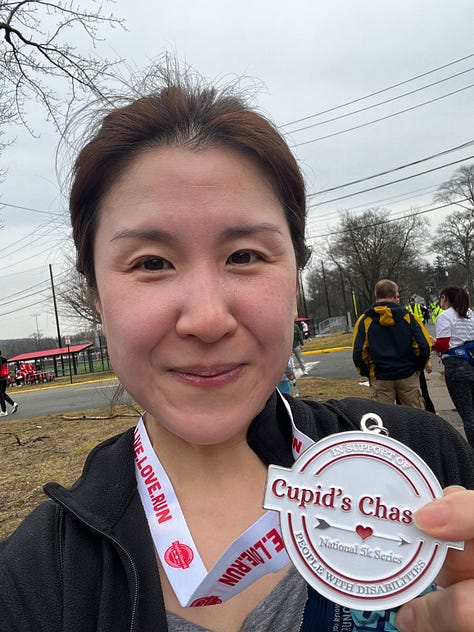

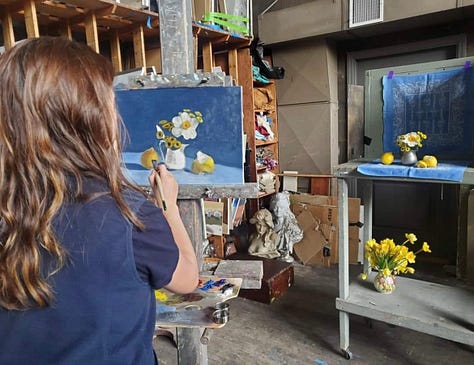
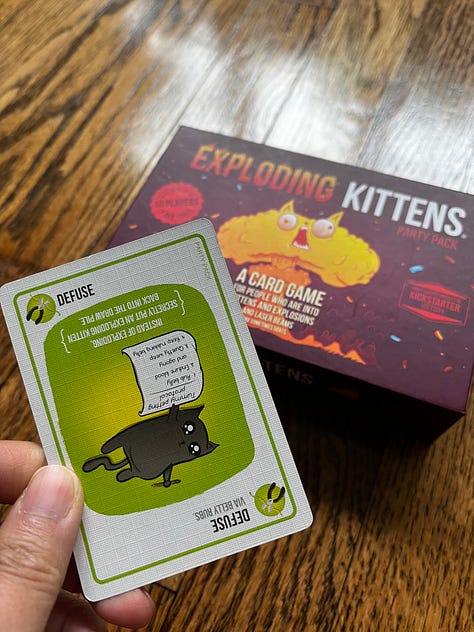

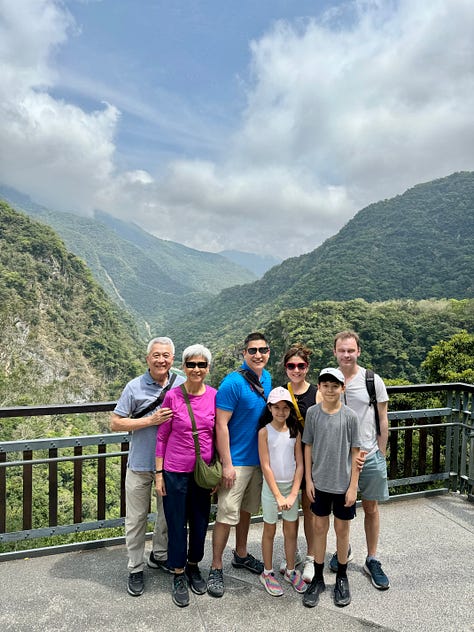
The biggest surprise of my sabbatical?
Realizing I needed more time than expected to heal from my last layoff. Even when you anticipate it, the shift from what did I do wrong to what’s next takes time.
So if you’re coming off of a layoff or even just a departure from your last role, don’t beat yourself up for having feelings. It’s not just normal; it means that the experience mattered to you.
The best part of the sabbatical?
That sabbatical helped me reset. I committed to designing my life vision first—and building my business around it.
Living by new principles.
For the first time, my schedule reflects my actual priorities: health, family, painting, friends. Work fits in around them, not the other way around.
With that foundation, I set guiding principles for my business. A few highlights:
1. Set highly achievable goals.
Momentum matters more than speed.
An example: Other people might be growing by hundreds of new subscribers per month, but my rate was 50/month, so that became my goal.
2. Give myself permission to be very imperfect.
Messy starts are better than polished never-starts.
An example: My live presence is one of my strengths. Yet I hate filming myself and editing videos. So my first few were super casual: no fancy backdrop, no script, no makeup, and no editing. Just filmed and posted.
They weren’t great, but they also didn’t suck. And surprisingly, people liked them. I’m still video-avoidant, but far less than before.
3. Seek out help and be willing to pay for it.
Teachers accelerated my growth in months.
An example: Tim Denning and Todd Brison helped me “get over myself” and just start writing online. I’m a far cry from being a great writer, but I no longer cringe when I publish and I know that even if I help just one person, it’ll have been worth the effort (and the fear).
4. Don’t try to do too much at once.
Focus beats frenzy.
An example: Writing online was one of my biggest hurdles, so I only wrote on Substack to start, and added LinkedIn months later when I had a Substack routine that was sustainable.
5. Setbacks are just reminders to learn and keep going.
Obstacles are part of the path.
An example: A few months after I launched my Substack and business websites, I realized I wanted to rebrand. I struggled with how to find the right new name. During that time, I lost my way more than I care to admit. Occasionally, though, I would come back to this principle and remind myself that “this too will pass” and feel some calm within the storm.
6. No unnecessary stress.
Discomfort is fine; misaligned pressure isn’t.
My litmus test: “Is this discomfort going to lead to alignment with my life goals? Or is it something I actually don’t have to do or at least not right now?”
An example: Podcast interviews have always been on my list of activities to help me build awareness. But I wasn’t confident enough about my brand or my message early on, so I shied away from them. It was the right decision. I didn’t need them to hit my goals this year and they would have caused unnecessary stress. Now that I’m clearer about my target customer and my offering, I’m ready to take them on.
7. Savor every moment.
They journey is the point. The milestones are just highlights.
An example: I keep a wins log in Notion. I share my wins with friends and family every chance I get. And I give myself a pat-on-the-back, and do a little dance each day I show up, and each time I grow.
My current playlist? The Kpop Demon Hunters soundtrack (yes, my daughter is not happy I shared that).
So, after all that thoughtful planning, how did it actually go?
Drum roll please… OK, the suspense is probably not killing you. But I’m excited to share my journey, inspired by the transparency of folks like Amanda Goetz, Jay Clouse, and Justin Welsh.
What went well (mostly).
Setting low-stress goals — They kept me calm and moving forward.
Finding community — This was the best part of the paid groups I joined.
Progressing incrementally — I didn’t grow fast, but I was steady.
Hitting my early client and financial targets — This gave me a huge confidence boost.
Giving myself room to go with less structure to start — I loved being messy. Still do.
Staying solo — I loved managing people and they totally drained me. Going at it alone feels like a gift every day.
Controlling my spending and not over-consuming — I spent more once I hit higher revenue targets and found I had more time to take in more information.
I didn’t have a side hustle or an existing email list, but I did have a strong network of people who I’d been quietly sharing my dream to become a coach for years. Several were so fast to respond when I announced my practice, I was booked almost immediately.
What was hard (and unexpected).
Balancing painting time with business and writing time and family time — being new to so many things at once, it was a black belt test for my ego every day.
Addiction to the social media treadmill — It was unavoidable. And I have managed it somewhat it by limiting notifications, turning off badges, and setting limits on when I can check and engage. It’s a work in progress.
Niching down or niching up — This one still bogs me down. I want to show up as my whole self. But you grow faster when you are super clear about what you do. It’s an ongoing tension for me.
Figuring out my brand — I launched without overthinking my brand name, but it quickly became clear that I was being too philosophical and not direct enough. Identifying and migrating to Lead without Limits was one of the most challenging parts of my first year.
Discovering gravity problems — Realizing that I need a larger audience to successfully fill group programs was deflating earlier this year, but math is math. If you don’t have enough of top of funnel, you can’t convert enough to the bottom of the funnel.
Deciding when to add more structure to help me progress — After years of setting up processes and systems, I wanted to play fast and loose. But if you want to scale your work, you have to add structure. My signal that it’s time? Whenever I had to do the same thing more than 3 times a month.
What was ugly.
More sleepless nights than I care to admit — When I was pondering my rebrand, deciding pricing, and diagnosing a problem, I often would get obsessed and struggle to step away.
Stress leaking into other things — With my newfound free time, I would start to worry about things I hadn’t made space for before (and for good reason). Tidying up the basement or investing in some new makeup isn’t a terrible use of time, but if it wasn’t super important before, why is it cropping up now?
It was hard to speak about what I was doing at first — I found it hard to talk about my work early on. In fact, I was gripped by fear that I was going to say the wrong thing — which for anyone who knows me, is very odd.
Each of these forced me to find new ways to re-center: focusing on one small step, re-grounding in my life vision, or simply giving myself permission to wait until I was ready.
A year’s progress, in reality.
As I reflect on the past year, I couldn’t be more pleased:
I’ve worked with nearly 40 clients; (10 one-on-one clients at a time, plus group intensives)
I’m on track to hit my $8.5K monthly recurring revenue (equivalent to $100K annual recurring revenue) by the end of 2025.
I now write at least 6 days a week, publish one long-form each week, and post on social media 7 days a week.
I paint 2 days a week and have spent a year on still-lifes, nearly a year on landscapes, and am hoping to try portraits next year.
I’m still a one-woman show and have a few basic weekly systems in place which are loose, but starting to get a bit more rigorous.
I meet regularly with incredible people all over the world on a similar path to share notes and good vibes.
The result I’m most proud of? I am finding my groove and making progress every month, even when it doesn’t always feel like it.
Lessons for any leader.
Solopreneurship is like any other entrepreneurial venture with a 10% success rate. When you make a leap, it’s easy to psych yourself out long before you’ve given yourself a chance to explore, to learn, and to grow.
With only 1 year under my belt, I know haven’t “made it” yet. But I’m feeling the momentum.
Here’s what I share to others starting out:
Play to your unfair advantages — Lean into your talents and obsessions.
Plant seeds — Talk about your dream; start small if you need to.
Build your presence now — An email list is an asset you’ll thank yourself for later.
Find teachers and coaches — They accelerate the journey. Here are few that helped me: Tim Denning, Shirzad Chamine, Benjamin Antoine, Colby Kultgen, Jade Bonacolta, Ben Meer, Justin Welsh, Amanda Goetz, Sinem Günel, Yana G.Y., Kat Nieh, Jeanette Martin, Sabrina Ahmed, Rajesh Mathur, Wendy Scott, and Magdalena Ponurska. They are worth checking out. Trust me.
Find and build community — Growth is lonely otherwise. I’m so grateful to all of my friends and the groups that I’ve had the pleasure of joining. You know who you are 🫶.
Take it step-by-step: Your race, your pace. Use other people’s journey to inspire, but not compare. Don’t get down, get curious.
Persistence over consistency: You might not be able to show up the same way every week. That’s OK. Just keeping coming back and the results will compound.
Rework your routines every 2-6 months as you learn and grow.
My biggest realization.
You don’t have to wait to create a life and a career you love. Many of these practices—setting boundaries, savoring wins, asking for flexibility—were available to me earlier. I just didn’t ask.
So don’t wait. Start testing now.
Thanks for being here week. If this post resonated, please give it a ❤️ so more people can benefit.
Need help or a nudge? Become a subscriber and send me a note. I respond to every message I receive.
And if you are ready to take a bigger leap, I’ll be opening up 5 spots for the winter. Book time to learn more.
May you lead without limits,



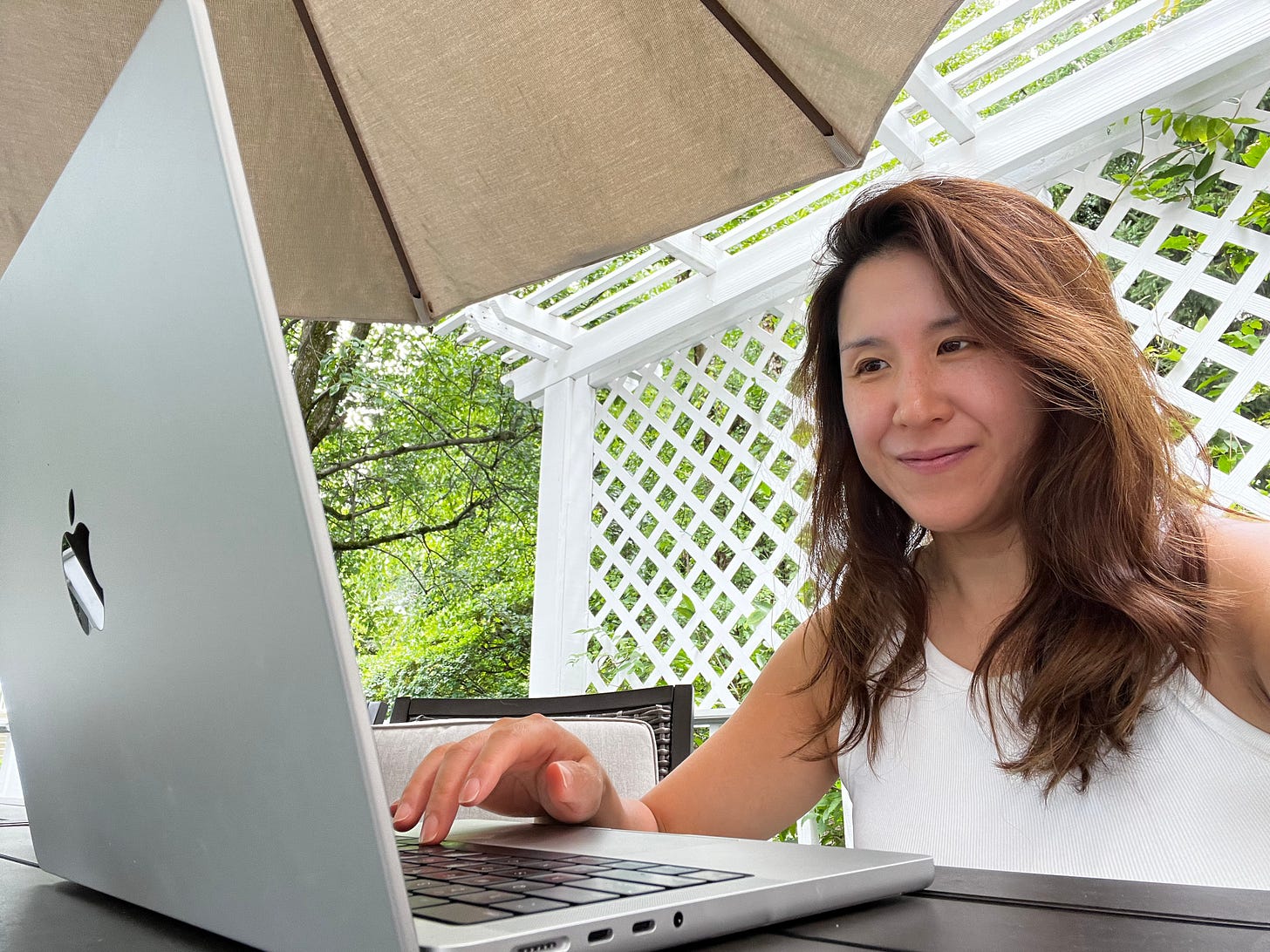

Wait what! I was looking at the picture up in the mountains and thought it looks *exactly* like Taiwan...
Then I read the post and it is! I love hiking there so much, can't wait to be back there in a couple of weeks after 6 months in Europe!
Thanks for sharing your progress. When I read that you got to $100k/year I got excited but somewhat disappointed at my lack of progress. My network is unfortunately mostly about software development so I have to kind of go from zero.
I had two jobs and two young kids, and my our mental/emotional/physical health, of both me and my wife was a mess. I thought 3 months would be enough but it took longer than a year, especially since we can't fully rest.
But I feel good now and I feel it's time. Your results inspire me. Thanks for sharing everything as it is!
Congrats on being on track towards your revenue goal and sharing this reflections!